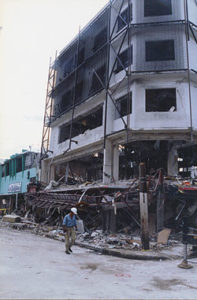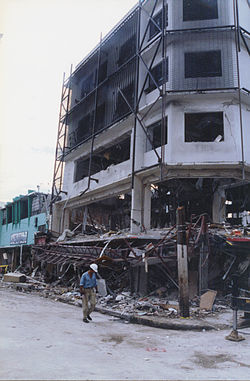- November 20, 1935 – Ice build-up on the wings of a KLM-DC-2 caused it to crash in Pian, Switzerland, killing 13 passengers and crew. Modern airliners have systems to mitigate icing problems both on the ground and in-flight but it still can occur with tragic results. Is your organization ready to handle a plane down now that winter is upon us?

- November 21, 1996 – An explosion in a San Juan, Puerto Rico department store killed more than 20 people. Lots of discussion has taken place regarding criminal attacks on malls, theaters and schools. Is your organization prepared to manage the life-safety and incident stabilization consequences of an accidental or intentional mass casualty event?
- November 22, 1950 – A train crash between the Babylon express and a commuter train at Richmond Hill, New York killed 79 passengers. Rail lines are everywhere including light rails in many cities. Accidents involving trains carry unusual risks and challenges. Has your organization recently reviewed you standard operating procedures for just such an event?
- November 23, 1963 – A fire broke out in a nursing home in Fitchville, Ohio. Only 21 patients made it out safely while 63 seniors died. Vulnerable populations are in every community. Has your organization reviewed and updated these locations and developed response packages depending on the size of the venue and involvement?
- November 24, 1966 – A killer smog in New York City caused 400 fatalities due to respiratory failure. Fentanyl laced over-dose deaths may be giving some agencies a small taste of what a respiratory mass casualty might look like. Have you ever table-top exercised this scenario and developed promising practice management strategies?
- November 25, 1940 – The French steamer Patria exploded while at anchor at the port of Hefa, Israel , killing 280. For me the take-away of this event reminder is the added complication water adds to our response. Has your organization war-gamed situations where you have a mass casualty event on the water or at a venue only accessible via the water?
- November 26, 1979 – An on-board fire killed 156 passengers aboard a Pakistan International Airlines plane at Jeddah, Saudi Arabia. Recently I was on a plane that had just pushed back from our gate at O’hare airport when we could see the black smoke pouring from the United flight out on the tarmac. I often am seated in an exit row and do take the time to make sure I understand the mechanism for opening the door. If I am not seated in an exit row I take the time to determine how many rows I am from the closest one. I anticipate needing to go by feel rather than vision if the cabin fills with smoke. In this type of event I am not worried the airport fire crews don’t know what to do, it’s the passengers themselves.
What are your thoughts on how we can learn from history to be better prepared for the future?




Thank you for posting.
More than just the history, we also need to highlight the good work done and the lacunae in the Emergency Management of the incident. This can help to plan and implement in similar future incidents.
The effort is appreciated.
I don’t go backwards in history when designing disaster drills and exercises, I use this week’s headlines. When someone in Vegas drives down a busy sidewalk I create a scenario about a driver going down a busy bar night in my town. When a bus full of senior citizens rolls on it’s way to the casino, that is the scenario that I set up for our next training event. My hope is that over time I can encourage providers to think: “If it happened somewhere, it can happen here.”
Thanks for your insights!